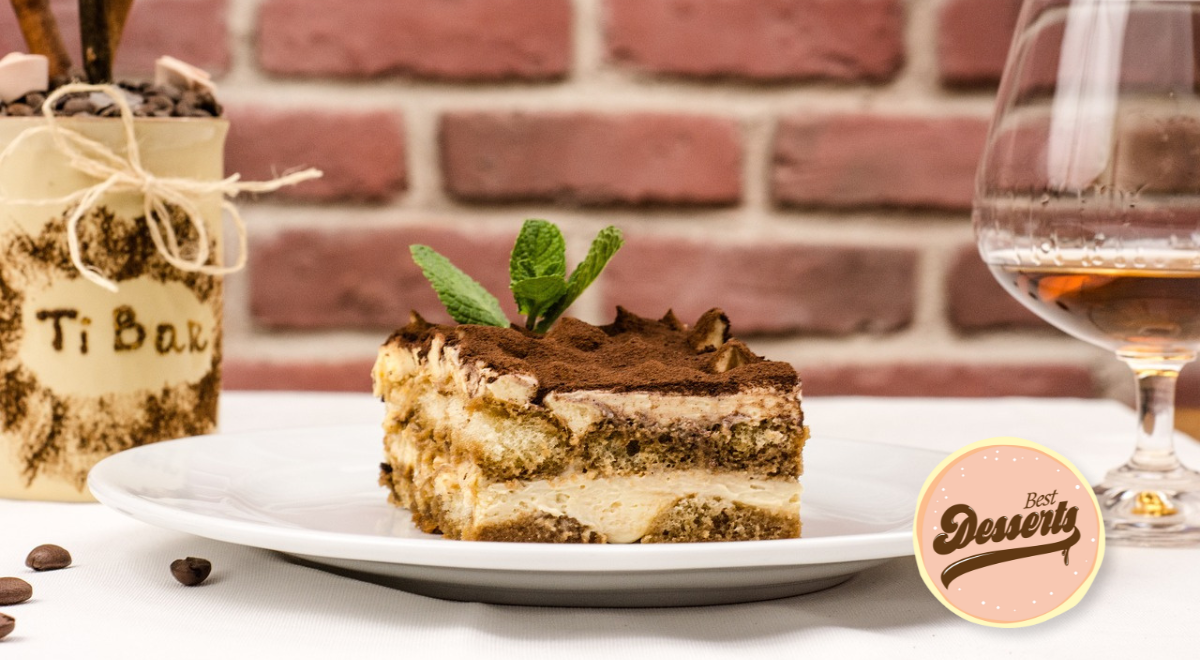Table of Contents
Why does tiramisu taste like vodka? The taste of vodka in tiramisu might come as a surprise since traditionally, tiramisu is an Italian dessert composed of layers of coffee-soaked ladyfingers and a rich, creamy mixture of eggs, sugar, and mascarpone cheese, often finished with a dusting of cocoa powder. The classic recipe does not include vodka; instead, it typically contains Marsala wine or a coffee-flavored liqueur such as Kahlúa or Tia Maria.
However, tiramisu’s flavor profile is open to modification, and some variations include different kinds of alcohol to give the dessert a distinct twist. If vodka is detectable in tiramisu, it’s likely due to a contemporary interpretation of the recipe. Vodka, being a neutral spirit with no intrinsic flavor, can carry the other flavors present in tiramisu, such as coffee or chocolate, without adding any complexity of its own. When used in moderation, it acts as an enhancer, subtly intensifying the dessert’s signature elements.
While alcohol can deepen the dessert’s flavors, the presence of a strong vodka taste could potentially mean that the quantity used overpowered the more subtle notes of the dessert. Instead of contributing to the overall balance of flavors, an excessive amount of vodka may instead overshadow them. Therefore, the key in incorporating vodka into tiramisu, as with any ingredient, is to do so with a measured hand to ensure it complements the flavor rather than dominates it.
Tiramisu Origins and Definition
The region of Veneto in Italy plays host to the origins of tiramisu, a dessert deeply rooted in Italian culinary tradition. Authenticity of recipe and technique underscores tiramisu’s revered status as a hallmark of Italian dessert culture.
Italian Dessert Tradition
Tiramisu, originating from the Italian region of Veneto, specifically Treviso, is a renowned dessert that is considered a cornerstone of Italian dessert tradition. Le Beccherie, a celebrated restaurant, is credited with the creation of tiramisu around the 1960s. The dessert encapsulates the essence of Italian flavors, featuring layers of savoiardi (ladyfingers) soaked in coffee and a blend of mascarpone cheese, eggs, and sugar. Many variations exist, but the traditional recipe remains a cultural icon in Italian cuisine.
Naming and Symbolism
The name “tiramisu” translates to “pick me up” or “cheer me up” in English, reflective of the dessert’s uplifting blend of bold coffee and sweet, creamy layers. It is often served as a symbol of hospitality and comfort — signifying the Italian predisposition for warmth and generosity. The dessert not only indulges the senses but also represents the tradition of sharing and celebration inherent in Italian social life.
Key Ingredients and Tiramisu Layers
The layered Italian dessert tiramisu combines distinct flavors and textures that can sometimes give off an alcoholic note depending on its preparation.
Mascarpone and Eggs
Tiramisu’s creamy texture mainly comes from a blend of mascarpone cheese, a rich Italian cream cheese, and whipped eggs. The eggs, often separated, with the yolks typically beaten with sugar and then combined with the mascarpone, contribute to the richness and smooth texture of the dessert.
- Mascarpone: A thick, creamy cheese with a high fat content.
- Egg Yolks: Whisked with sugar for sweetness and to thicken the mascarpone mixture.
Coffee and Alcohol Infusion
The mixture is infused with bitter yet aromatic espresso or strong coffee, which is often combined with a sweet and potent alcohol such as marsala or other liqueurs. This balance creates a layered flavor profile of both bitter and sweet components.
- Espresso/Coffee: Strong and concentrated, used to soak ladyfingers.
- Alcohol (typically Marsala): Can lend a strong alcoholic flavor when used in excess.
Ladyfingers and Cocoa Component
The base of tiramisu consists of ladyfingers (known as savoiardi in Italy), which are light and dry sponge biscuits ideal for soaking up the coffee and alcohol mixture. A dusting of cocoa powder or grated chocolate tops off the dessert, which contributes to the complex chocolate notes without overpowering the other flavors.
- Ladyfingers/Savoiardi: Absorbent biscuits that form the structure of the dessert layers.
- Cocoa Powder/Chocolate: Adds a dusting of bitter flavor to contrast the dessert’s sweetness.
The Role of Alcohol in Tiramisu
Tiramisu traditionally incorporates alcohol to augment its flavors and overall complexity. This section examines how alcohol serves as a flavor enhancer, identifies common types of alcohol used and their distinct influences on the dessert, and discusses non-alcoholic alternatives.
Flavor Enhancement
Alcohol in tiramisu is chiefly responsible for intensifying and blending the dessert’s flavors. Marsala wine and rum are frequently employed, both offering a depth of flavor that marries well with the boldness of coffee. They work to balance the sweet and creamy elements with their inherent warmth and complexity.
Alcohol Varieties and Their Impact
Several types of alcohol can be used in tiramisu, each bringing its unique profile to the dessert:
- Marsala Wine: A Sicilian wine that imparts rich, caramel-like notes.
- Rum: Adds a sweet and slightly spicy touch.
- Brandy: Provides a sophisticated, oaky nuance.
- Amaretto: Lends a subtle almond flavor.
- Coffee Liqueur: Such as Kahlua or Tia Maria, enhances the coffee component.
The choice of alcohol affects not only the taste but also the alcohol content in tiramisu. As such, selecting the appropriate type and quantity is important to avoid overpowering the dessert.
Non-Alcoholic Substitutes
For a tiramisu without alcohol, various non-alcoholic substitutes can maintain the dessert’s rich profile while ensuring it’s suitable for all audiences:
- Vanilla Extract: Mimics the complexity alcohol adds.
- Coffee or Chocolate Syrups: Emphasize the existing coffee flavor.
- Almond Extract: Replaces amaretto’s nutty essence.
One common mistake is neglecting the balance of flavors when omitting alcohol. Substitutes should be chosen carefully to preserve the characteristic taste of tiramisu.
Preparing the Perfect Tiramisu
Tiramisu is a popular Italian dessert that requires precise layering and high-quality ingredients to achieve its signature flavor and texture.
Step-by-Step Process
The preparation begins with assembling fresh ingredients. A classic tiramisu recipe involves dipping ladyfingers or pavesini in strong coffee, followed by layering them with a rich mascarpone cream mixture. The dessert should be constructed in stages:
- Brew strong coffee and let it cool.
- In a separate bowl, combine mascarpone cheese with sugar until smooth.
- Beat raw eggs until fluffy and then gently fold into the mascarpone mixture to create the cream.
- Quickly dip each ladyfinger into coffee, avoiding excess moisture to keep them firm.
- Arrange a layer of soaked ladyfingers at the base of the serving dish.
- Spread half of the mascarpone mixture over the ladyfingers evenly.
- Add another layer of coffee-dipped ladyfingers.
- Top with the remaining mascarpone mixture and smooth out the surface.
- Finally, dust with cocoa powder and refrigerate for several hours to set.
Utilizing Quality Components
The essence of tiramisu lies in its components. Key components include:
- Mascarpone cheese: Should be fresh and creamy for a rich flavor.
- Fresh Ingredients: Utilize fresh eggs and high-quality coffee for a superior taste.
- Homemade vs. Store-Bought: Whenever possible, homemade ladyfingers or pavesini offer a fresher foundation compared to pre-packaged options.
- Whipped Cream: Some chefs opt to lighten the mascarpone with gently whipped cream, enhancing the fluffy texture of the dessert.
Handling and Safety Tips
Handling the ingredients with care is essential for a safe and successful tiramisu:
- Raw Eggs: Use pasteurized eggs to minimize the risk of salmonella.
- Equipment: Ensure all utensils and mixing bowls are clean to avoid contamination.
- Moisture Control: Over-soaking ladyfingers can result in a soggy dessert, so dip briefly.
- Sponge Consistency: A balance must be struck between too dry and too wet; the sponge cake should absorb the coffee while retaining structure.
Tiramisu Variations and Serving Tips
Tiramisu, traditionally known for its harmonizing flavors of coffee and mascarpone cheese, allows for regional twists and personal touches in its preparation.
Regional and Modern Modifications
Each region may interpret tiramisu’s delicate balance of flavors differently, introducing local or contemporary influences. For example, some chefs might incorporate unique flavor profiles such as nutty or caramel notes into the classic recipe. Dark rum or coffee-flavored liqueurs are often used, but various types of alcohol like vodka or amaretto can be substituted to create a different taste experience. For a distinctively rich taste, a splash of vanilla extract might be added. In regions where alcohol is less predominant in cuisine, non-alcoholic versions of tiramisu might use fruit juices or syrups as substitutes, maintaining the dessert’s moist texture. To cater to nut enthusiasts, almonds might be sprinkled on top or finely ground into the layers.
Plating and Presentation
Presentation plays a significant role in amplifying tiramisu’s appeal. Start with a base of soft, coffee-soaked savoiardi cookies to create a foundation with the right texture. To serve, a scoop of tiramisu should be carefully placed on the plate, maintaining its layered structure. For a visual treat, sieve a fine layer of grated chocolate over the dessert right before serving to add an indulgent contrast. With non-alcoholic tiramisu, consider a dusting of cocoa powder paired with a sprig of mint for a refreshing look. Whether it’s complemented by a drizzle of chocolate sauce or a side of fresh berries, the key is to emphasize the tiramisu’s elegance without overwhelming its unique flavor profile.
Health and Dietary Considerations
When considering the health and dietary implications of tiramisu, especially its taste reminiscent of vodka, it’s essential to examine both the alcoholic content within the dessert and how it aligns with special diets.
Alcohol Content and Consumption
Tiramisu traditionally includes Italian liqueurs or alcohol such as Marsala wine. Sometimes, vodka is used, which can enhance the dessert’s distinctive taste. The alcohol content in tiramisu can vary depending on the recipe and the amount of liquor added. For individuals avoiding alcohol, for health, personal, or religious reasons, this is a critical consideration.
- For pregnant women: Consuming tiramisu with alcohol content is not advised due to potential health risks to the fetus.
- For general consumption: The alcohol typically cooks off during the preparation, leaving the flavor without a significant amount of alcohol content. Still, some recipes with high alcohol volume may retain their potency.
Note: Labels and descriptions at restaurants or on pre-packaged tiramisu should indicate the presence and level of alcohol.
Tiramisu for Special Diets
Creating tiramisu that aligns with specific dietary restrictions involves substituting traditional ingredients.
- Non-alcoholic versions: Use a mixture of non-alcoholic vanilla extract or a non-alcoholic Italian liqueur substitute to achieve a similar flavor profile.
- Sugar considerations: Alternative sweeteners or adjustments in the sugar quantity can cater to those monitoring their sugar intake.
- Gluten-free diets: Gluten-free savoiardi biscuits (ladyfingers) can replace the traditional ones.
- Lactose intolerance: Dairy-free mascarpone substitutes are available, but the outcome may affect the authentic taste.
Special diet recipes should always mention their specific ingredient alterations, and, regardless, tiramisu remains a dessert high in calories and should be consumed in moderation.


